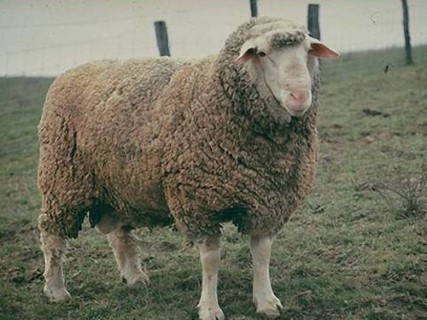 |
| Source: Sheep 101 |
During the late 18th century, the infusion of Merino genetics into German sheep flocks along the border with France marked the inception of a new breed that would eventually thrive in the Alsace Lorraine region of France. This new breed, known as the Est à Laine Merino, derives its name from the French phrase meaning "East and Wool."
Est à Laine Merinos are distinguished by their impressive stature, exhibiting a robust and large-framed physique that reflects their heritage as a meat-focused Merino strain. Their most notable feature is their exceptionally fine white wool, prized for its quality and versatility in textile production.
In appearance, Est à Laine Merinos present a striking image with their elongated white heads adorned with long, drooping ears, characteristic of Merino breeds. Notably, these sheep are naturally polled, lacking horns unlike their Merino ancestors, which contributes to their ease of handling and management. Additionally, their necks are devoid of folds or dewlaps, simplifying the shearing process and enhancing efficiency in wool production.
Overall, Est à Laine Merinos epitomize the fusion of Merino excellence with a focus on wool quality and meat production, making them a valuable asset in agricultural landscapes where premium wool and meat are prized commodities.
